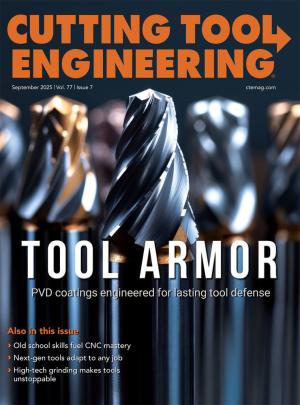While cruising LinkedIn last week, I came across a post with a photo that showed a vocational classroom full of conventional knee mills and lathes. In the post the author was criticizing the use of conventional machines to train modern students. The author believes that students should learn machining on ‘modern’ machines like 5 axis machining centers while using CAD/CAM software. His belief is that students will not be able to function in modern manufacturing by learning ‘outdated’ methods and therefore these old machines and methods do not have a place in the curriculum.
Of course, students need to be exposed to CNC programming, 5-axis machining, and CAD/CAM software as part of the machine shop (tool making) curriculums, I don’t think anyone would argue. However, every student should start out on the conventional machines and demonstrate competence using them before they transition to CNC machining and CAD/ CAM programming.Educational Benefits of Conventional Machines
Setting up and using conventional machine tools are critical to success when a student transitions to more complex processes like CNC machining. Workholding, cutting speeds and the creation of the correct part geometry are best learned while standing in front of conventional machine tools and cranking on handles.
A competent and willing student can learn to write usable CNC code in three days or less. I have witnessed it. Teaching a person how to secure an odd-shaped part to the mill table or in a lathe chuck takes much longer. Workholding in a real machine shop is not always as simple as putting a rectilinear block into a vise or a cylinder into a lathe chuck. Students need to be exposed to parts that require creative approaches like machining a special set of jaws to hold an odd-shaped part or using a four-jaw chuck to create eccentric shapes.
Proper use of cutting tools is best learned through the feedback of a machine tool handle. Cutting tools impact four of the five senses. And when something is wrong, one or more of the four senses will provide an early warning signal. CNC machines insulate the machinist from sensory feedback. If a student is not allowed to feel how a dull endmill behaves or hear the sound of a squealing drill that is turning too fast, they are going to struggle to properly use and maintain tools in a CNC machine.
CNC machines arrive in perfect alignment and, except for major crashes, do not need adjustment on a regular basis to maintain proper alignment. Conventional machines are quite different. Machinists must routinely adjust the alignment of various components so that they can produce geometrically correct parts. In some cases, making the part on a conventional machine requires the head of a knee mill to be angled and/or the tailstock of a lathe shifted off center. These are experiences that drive the understanding of how part geometry and machine tool geometry are linked.
Problem solving outside the box
Machinists who haven’t spent time in front of conventional machines will often make adjustments to fixture offsets, tool offsets and programs trying to correct a problem that is a result of mechanical issues or mis-aligned components. I have witnessed multiple occasions where a machinist has tried to program away dimensional issues on a part without success only to find out that some element, usually the workholding device, was misaligned.
When I was in the automotive industry, I witnessed this firsthand. We machined a valve body for power steering using a collet on a rotary table. The rotary table had been worked on and the collet chuck not aligned after reassembly. The eccentric rotation caused dimensional issues and that the machinist was not able to correct with offsets and program changes. The manufacturing engineer who finally solved the issue had been a machinist in a shop full of conventional machines before coming to our plant.
CNC machining and CAM software encourage non-value-added creativity. Programmers can become, with good intent, consumed with creating solutions that are elegant in the simulation but do not aide profitability, which is the ultimate goal in a shop. Using multiaxis interpolation to create a radius when an endmill with a corner radius will suffice, or putting multiple tools in a hole when a custom drill is a better choice, are some examples.
Customers don’t pay for elegant programs; they pay for good parts. Conventional machinists are naturally prone to short cuts. When machinists have to turn handles all day long, they become driven to seek ways to reduce movement, and that ultimately improves shop efficiency. These traits remain undeveloped in the machinist or programmer who only knows CNC machining so, they are more likely to be accepting of inefficient processes.
More versatility
There are other less tangible benefits gained from learning on conventional machines. A good machinist who can jump off the CNC machine and onto the conventional machine is worth a lot more money. Oil and gas, aerospace and power generation are industries that often need machinists who can go back and forth. These machinists get paid exceptionally well and the demand is only growing.
There is no question that machining students need to learn modern machining techniques. However, skipping the foundational elements that come by learning on conventional machines is a step backward. Students who are not exposed to conventional machining are not going to be immediately efficient in the CNC realm, and will struggle to solve problems that result outside of machine tool code. While conventional machining techniques may not always be directly transferrable to CNC machines, the critical thinking skills machinists acquire by using conventional machines will serve them well when the time comes.
Related Glossary Terms
- centers
centers
Cone-shaped pins that support a workpiece by one or two ends during machining. The centers fit into holes drilled in the workpiece ends. Centers that turn with the workpiece are called “live” centers; those that do not are called “dead” centers.
- chuck
chuck
Workholding device that affixes to a mill, lathe or drill-press spindle. It holds a tool or workpiece by one end, allowing it to be rotated. May also be fitted to the machine table to hold a workpiece. Two or more adjustable jaws actually hold the tool or part. May be actuated manually, pneumatically, hydraulically or electrically. See collet.
- collet
collet
Flexible-sided device that secures a tool or workpiece. Similar in function to a chuck, but can accommodate only a narrow size range. Typically provides greater gripping force and precision than a chuck. See chuck.
- computer numerical control ( CNC)
computer numerical control ( CNC)
Microprocessor-based controller dedicated to a machine tool that permits the creation or modification of parts. Programmed numerical control activates the machine’s servos and spindle drives and controls the various machining operations. See DNC, direct numerical control; NC, numerical control.
- computer-aided manufacturing ( CAM)
computer-aided manufacturing ( CAM)
Use of computers to control machining and manufacturing processes.
- endmill
endmill
Milling cutter held by its shank that cuts on its periphery and, if so configured, on its free end. Takes a variety of shapes (single- and double-end, roughing, ballnose and cup-end) and sizes (stub, medium, long and extra-long). Also comes with differing numbers of flutes.
- fixture
fixture
Device, often made in-house, that holds a specific workpiece. See jig; modular fixturing.
- interpolation
interpolation
Process of generating a sufficient number of positioning commands for the servomotors driving the machine tool so the path of the tool closely approximates the ideal path. See CNC, computer numerical control; NC, numerical control.
- lathe
lathe
Turning machine capable of sawing, milling, grinding, gear-cutting, drilling, reaming, boring, threading, facing, chamfering, grooving, knurling, spinning, parting, necking, taper-cutting, and cam- and eccentric-cutting, as well as step- and straight-turning. Comes in a variety of forms, ranging from manual to semiautomatic to fully automatic, with major types being engine lathes, turning and contouring lathes, turret lathes and numerical-control lathes. The engine lathe consists of a headstock and spindle, tailstock, bed, carriage (complete with apron) and cross slides. Features include gear- (speed) and feed-selector levers, toolpost, compound rest, lead screw and reversing lead screw, threading dial and rapid-traverse lever. Special lathe types include through-the-spindle, camshaft and crankshaft, brake drum and rotor, spinning and gun-barrel machines. Toolroom and bench lathes are used for precision work; the former for tool-and-die work and similar tasks, the latter for small workpieces (instruments, watches), normally without a power feed. Models are typically designated according to their “swing,” or the largest-diameter workpiece that can be rotated; bed length, or the distance between centers; and horsepower generated. See turning machine.
- milling machine ( mill)
milling machine ( mill)
Runs endmills and arbor-mounted milling cutters. Features include a head with a spindle that drives the cutters; a column, knee and table that provide motion in the three Cartesian axes; and a base that supports the components and houses the cutting-fluid pump and reservoir. The work is mounted on the table and fed into the rotating cutter or endmill to accomplish the milling steps; vertical milling machines also feed endmills into the work by means of a spindle-mounted quill. Models range from small manual machines to big bed-type and duplex mills. All take one of three basic forms: vertical, horizontal or convertible horizontal/vertical. Vertical machines may be knee-type (the table is mounted on a knee that can be elevated) or bed-type (the table is securely supported and only moves horizontally). In general, horizontal machines are bigger and more powerful, while vertical machines are lighter but more versatile and easier to set up and operate.
- turning
turning
Workpiece is held in a chuck, mounted on a face plate or secured between centers and rotated while a cutting tool, normally a single-point tool, is fed into it along its periphery or across its end or face. Takes the form of straight turning (cutting along the periphery of the workpiece); taper turning (creating a taper); step turning (turning different-size diameters on the same work); chamfering (beveling an edge or shoulder); facing (cutting on an end); turning threads (usually external but can be internal); roughing (high-volume metal removal); and finishing (final light cuts). Performed on lathes, turning centers, chucking machines, automatic screw machines and similar machines.


